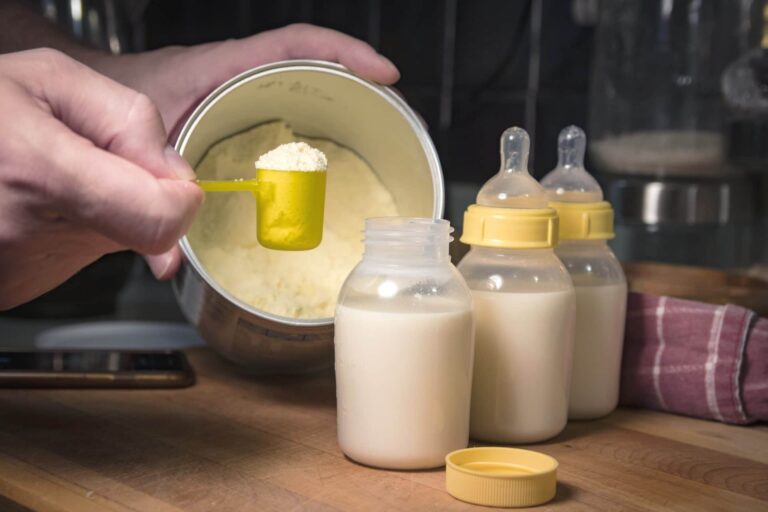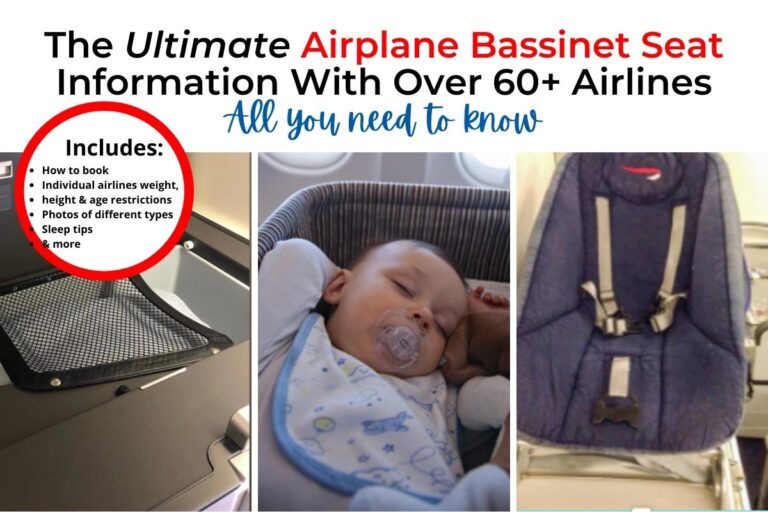How Much of a Pouch Should My Baby Eat? Find the Perfect Portion Size
Babies should not consume more than one or two pouches of food per day. Overusing pouches can have negative effects on a baby’s health, as some pouches contain high amounts of sugar that can lead to tooth decay.
It is important to read labels and choose low-sugar/high-fiber options. Feeding babies with spoons instead of allowing them to directly suck from the pouch helps them develop their oral motor function. Jarred shelf-stable baby food lasts for about two years, while pouch-stored baby food lasts for one year.
It is crucial to consider portion sizes and the nutritional needs of your baby at each stage.
The Importance Of Monitoring Your Baby’s Pouch Consumption
When it comes to your baby’s pouch consumption, it’s important to know how much they should eat. Avoid overusing pouches and keep it to one or two per day, choosing low-sugar and high-fiber options. Don’t let convenience overshadow your baby’s health.
Baby Pouches Can Be A Convenient And Nutritious Option For Feeding Your Little One.
Baby pouches have become extremely popular among parents due to their convenience and the variety of flavors they offer. These ready-to-eat pouches are a great option for busy parents who are always on the go. They are portable, mess-free, and require no preparation time. Additionally, baby pouches are often packed with essential nutrients that are vital for your baby’s growth and development.
When choosing baby pouches, it is important to look for high-quality brands that prioritize organic ingredients and minimize additives and preservatives. This ensures that your little one is getting a wholesome and nutritious meal.
However, It Is Important To Monitor The Amount Of Pouches Your Baby Consumes.
While baby pouches can be a convenient option, it is crucial to monitor your baby’s consumption to ensure they are getting a balanced diet. Overusing pouches can have negative implications on your baby’s health.
One concern is that some pouches contain high amounts of sugar, which can be detrimental to your baby’s dental health. The sugar in these pouches can sit on your child’s teeth and gums, increasing the risk of tooth decay. It is essential to read the labels and choose low-sugar options to protect your baby’s oral health.
Moreover, relying solely on pouches can affect your baby’s eating habits in the long run. Drinking food from a pouch is not as satisfying as eating it, as it bypasses the chewing process. This can impact your baby’s ability to develop proper chewing and swallowing skills. It is important to introduce a variety of textures and encourage self-feeding when appropriate to promote healthy oral motor function.
So, how many pouches should your baby eat in a day? It is recommended to limit the consumption to one or two pouches per day. This ensures that your baby is receiving a balanced diet with appropriate amounts of nutrients while also encouraging the intake of solid foods.
Remember, convenience should not trump your baby’s health. While pouches may seem like an easy option, it is important to prioritize the overall nutritional needs of your little one. Opt for homemade meals whenever possible and use pouches as a supplement or occasional treat.

Credit: www.babycenter.com
Factors To Consider When Determining The Ideal Portion Size
When it comes to feeding your baby, determining the ideal portion size can be a challenging task. There are several factors you need to consider to ensure your baby is getting the right amount of food. By understanding these factors, you can provide your baby with nutritionally balanced meals that support their growth and development. Here are three important factors to consider when determining the ideal portion size:
Age And Stage Of Development
The age and stage of development play a crucial role in determining the portion size for your baby. As your baby grows, their nutritional needs change, and their appetite increases. For instance, a newborn will consume small amounts of breast milk or formula, gradually increasing to larger quantities as they grow older. As your baby starts eating solid foods, portion sizes should be adjusted to match their age and developmental milestones.
Appetite And Hunger Cues
Each baby has their own unique appetite and hunger cues. Some babies have small appetites and prefer smaller portion sizes, while others may have larger appetites and require more food. It’s important to pay attention to your baby’s hunger and fullness cues during feeding. Look for signs of hunger, such as increased alertness, sucking motions, or reaching for food. Similarly, watch for signs of fullness, such as turning their head away, closing their mouth, or pushing food away. By being responsive to your baby’s cues, you can help them develop a healthy relationship with food.
Nutritional Needs
Another important factor to consider when determining the ideal portion size is your baby’s nutritional needs. Babies require a balance of macronutrients (carbohydrates, proteins, and fats) as well as micronutrients (vitamins and minerals) for optimal growth and development. It’s important to offer a variety of foods that provide these essential nutrients. Consulting with a pediatrician or a registered dietitian can help you ensure that your baby’s diet meets their specific nutritional needs.
In conclusion
When determining the ideal portion size for your baby, it’s essential to consider their age and stage of development, their appetite and hunger cues, and their nutritional needs. By taking these factors into account, you can provide your baby with well-balanced meals that support their growth and development.
Guidelines For Portion Sizes Based On Age
When it comes to feeding your baby, it’s important to provide appropriate portion sizes based on their age and developmental stage. Feeding too little or too much can impact their growth and overall health. In this article, we’ll discuss the guidelines for portion sizes based on specific age groups to help ensure your baby is receiving the right amount of food.
Introducing Pouches To Infants (4-6 Months)
Introducing your baby to pouches can be an exciting milestone. At this age, your baby’s primary source of nutrition is breast milk or formula. Pouches should be introduced as a supplement to their milk intake, not a replacement. It’s recommended to start with single-ingredient purees that are smooth in texture.
Gradually introduce small amounts of purees to gauge your baby’s acceptance and tolerance. Begin with a few spoonfuls or small dabs on their tongue. Observe their reaction and continue to increase the amount gradually as they show signs of readiness and enjoyment.
Offer one pouch per day as a snack, alongside their regular milk feedings. This helps familiarize your baby with flavors and textures and encourages them to explore new tastes.
Transitioning To Solid Foods (6-8 Months)
As your baby gets older and more accustomed to eating purees, you can start introducing a variety of textures and flavors in pouches. This is important for developing their taste preferences and encouraging a diverse diet.
Increase the portion size to accommodate their growing appetite. Your baby may be consuming 2-3 pouches per day, depending on their hunger cues. It’s important to offer a balanced combination of fruits, vegetables, and other nutrient-rich ingredients to support their overall development.
Independent Eating (8-12 Months)
At this stage, your baby is likely developing their coordination skills and may show interest in self-feeding. Encourage self-feeding with pouches by allowing them to hold and squeeze the pouch under your supervision.
Offer multiple pouches throughout the day, alongside other foods, to ensure they are receiving a sufficient variety of nutrients. This complements their growing independence and allows them to explore different flavors and textures.
Summary
When it comes to portion sizes for baby pouches, it’s essential to consider your baby’s age and developmental stage. Introduce pouches as a supplement to milk intake, gradually increase portion sizes, and encourage self-feeding as they grow older. By following these guidelines, you can help ensure your baby receives the right amount of nutrition for their age and development.
Signs Your Baby May Be Eating Too Much Or Too Little
It’s important to be aware of signs that your baby may be eating too much or too little. When it comes to baby food pouches, it is recommended to not exceed one or two pouches a day, choosing low-sugar/high-fiber options for your baby’s health.
Avoid overusing pouches to prevent tooth decay and ensure your baby gets the satisfaction of eating rather than just drinking.
Overeating Indicators
When it comes to feeding your baby, it’s essential to find the right balance. Knowing how much of a pouch your baby should eat is crucial in ensuring their nutrition and growth. However, it’s also important to be aware of the signs that your baby may be eating too much. Here are some indicators of overeating to look out for: – Rapid weight gain: If you notice that your baby is gaining weight rapidly, it could be a sign that they are overeating. While babies will naturally gain weight as they grow, excessive weight gain may indicate an excessive intake of food. – Frequent spit-ups or reflux: Another indicator of overeating is if your baby experiences frequent spit-ups or reflux. These issues can occur when your baby’s stomach becomes overwhelmed with too much food.Under-eating Indicators
On the other hand, it’s also important to recognize the signs that your baby may not be eating enough. Here are some indicators of under-eating to be aware of: – Lack of weight gain or slow growth: If your baby consistently fails to gain weight or experiences slow growth, it may be a sign that they are not consuming enough food. This could indicate that they are under-eating and need a larger quantity of food. – Consistently refusing pouches: If your baby consistently refuses to eat from pouches, it may be an indication that they are not getting enough nutrition. It’s important to address this issue and find alternative feeding methods that work for your baby. In conclusion, being mindful of the signs that your baby may be eating too much or too little is vital in ensuring their overall health and development. By paying attention to these indicators and making appropriate adjustments to their feeding routine, you can help your baby thrive and achieve optimal nutrition.Tips For Finding The Balance
When it comes to how much of a pouch your baby should eat, it’s important to find the right balance. Avoid overusing pouches as they may have more sugar and can contribute to tooth decay. Aim for one or two pouches per day and choose low-sugar, high-fiber options.
Listen To Your Baby’s Hunger And Fullness Cues
When it comes to feeding your baby, it’s important to pay attention to their hunger and fullness cues. Babies have an innate ability to communicate when they are hungry or full, and it’s essential to listen to these cues.
Watch for signals such as rooting, sucking on their fists, or opening their mouth when they see food. These are signs that your baby is hungry and ready to eat. On the other hand, if your baby turns their head away, closes their mouth, or starts playing with their food, they may be indicating that they are full.
By observing and responding to your baby’s cues, you can guide their feeding sessions and ensure that they are getting the right amount of food.
Offer A Variety Of Foods Alongside Pouches
While pouches can be a convenient option for feeding your baby, it’s important to provide a variety of foods alongside them. Pouches should not be the sole source of nutrition for your little one.
Introduce different textures and flavors by offering mashed vegetables, fruits, and soft finger foods. This variety not only exposes your baby to a range of nutrients but also helps develop their taste preferences and encourages them to explore different foods.
Remember, pouches should be used as a tool to supplement a well-rounded diet, rather than as the main source of nutrition.
Consult With A Pediatrician For Personalized Guidance
Every baby is unique, and their nutritional needs may vary. It’s always a good idea to consult with a pediatrician for personalized guidance when it comes to feeding your baby.
A pediatrician can assess your baby’s growth, development, and individual needs to provide specific recommendations on how much of a pouch they should be eating. They can also address any concerns or questions you may have regarding your baby’s feeding habits.
By seeking professional advice, you can ensure that your baby’s nutritional needs are being met and find the right balance between pouches and other foods.
Sources:
- Do Baby Food Pouches Cause Eating Problems? – WebMD
- Food pouches in child’s diet | Happy Baby Organics
- The (ugly) Truth About Baby Food Pouches
- How Much Food Does Your Baby Need? – Once Upon a Farm
- How much should my baby eat? – BabyCenter
Frequently Asked Questions Of How Much Of A Pouch Should My Baby Eat
Should My Baby Eat A Whole Pouch Of Food?
Your baby should not eat a whole pouch of food in one sitting. Overusing pouches can be detrimental to your baby’s health. Some pouches contain more sugar than whole fruit, leading to potential tooth decay. Instead, limit your baby to one or two pouches per day, choosing low-sugar and high-fiber options.
Always read labels and prioritize your baby’s health over convenience.
How Many Pouches A Day Should A Baby Eat?
Babies should not exceed one or two pouches of food per day. Look for low-sugar/high-fiber options and prioritize health over convenience. Overusing pouches can negatively impact a baby’s health, including tooth decay. Always read labels and be mindful of the nutritional content of the pouches.
How Do You Feed A Baby With Pouches?
To feed a baby with pouches, squeeze a small amount onto a spoon and feed it to your baby. This helps develop their oral motor function. Limit pouches to one or two per day and choose low-sugar/high-fiber options. Always read labels and prioritize health over convenience.
How Long Does Baby Food In A Pouch Last?
Baby food in a pouch can last for one year. It is convenient for supermarkets and companies as it has a longer shelf life compared to jarred food.
Conclusion
Incorporating pouches into your baby’s diet can be a convenient option, but moderation is key. Avoid overuse and opt for low-sugar/high-fiber options. Remember, drinking food may not be as satisfying as eating it. It’s important to read labels and prioritize your baby’s dental health.
By limiting pouches to one or two servings per day, you prioritize your baby’s overall health. Always consider the long-term effects of convenience foods. Instead, use a spoon to feed your baby, promoting oral motor function development.







